Abstract
Incubation of L-929 and L-2071 fibroblasts with prostaglandin E1 (PGE1) caused a rapid increase in the cyclic AMP content of these cells. A maximal effect was produced with 0.2 μg PGE1 per ml. At a concentration of 4 μg/ml, PGE2 was almost equally effective, but PGF2α and PGA2 were much less so. 2.6 μM epinephrine, 0.4 mM serotonin, and 0.2% ethanol were without effect. In L-929 cells, cyclic AMP concentrations remained elevated for 2-5 hr, and then declined, although even after a 24-hr incubation the medium contained PGE1 in a concentration sufficient to increase maximally the cyclic AMP content of cells not previously exposed to this compound. A second addition of PGE1 after 5 or 24 hr did not produce another increase in the concentration of cyclic AMP. After incubation with PGE1 for 24 hr, cyclic AMP phosphodiesterase activity, assayed with 0.56 μM substrate, was increased 30-100%; the activity rose further between 24 and 48 hr. It is suggested that the increase in phosphodiesterase activity that appears to be a consequence of prolonged elevation of cyclic AMP concentration may account at least in part for the apparent “refractoriness” to PGE1 that develops after incubation for several hours with this compound.
Keywords: mouse L cells, tissue culture, enzyme kinetics, prostaglandin homologues
Full text
PDF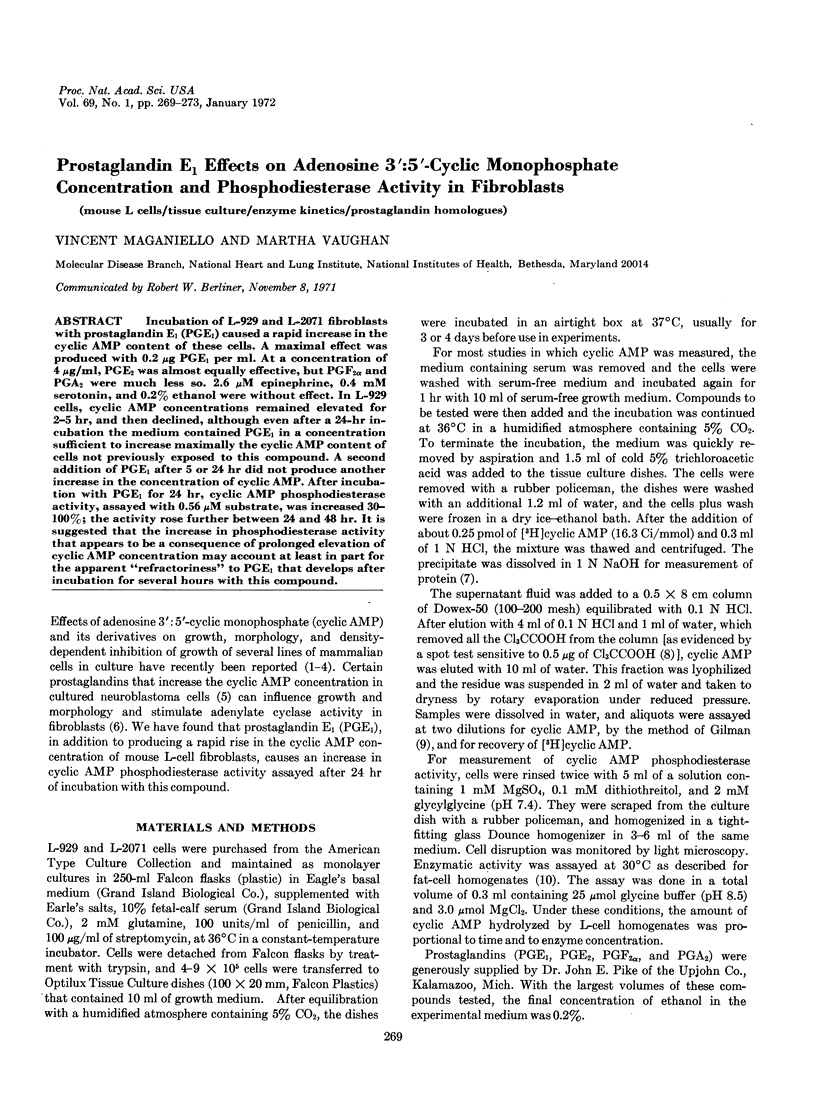
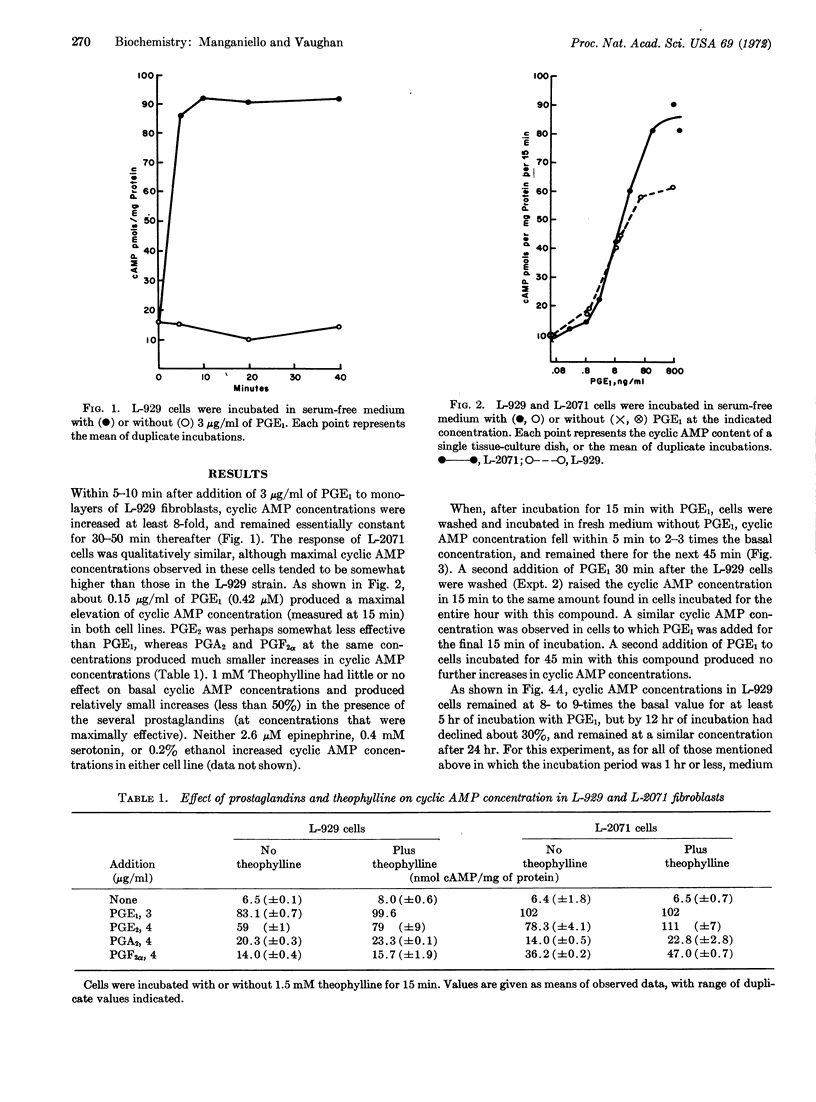
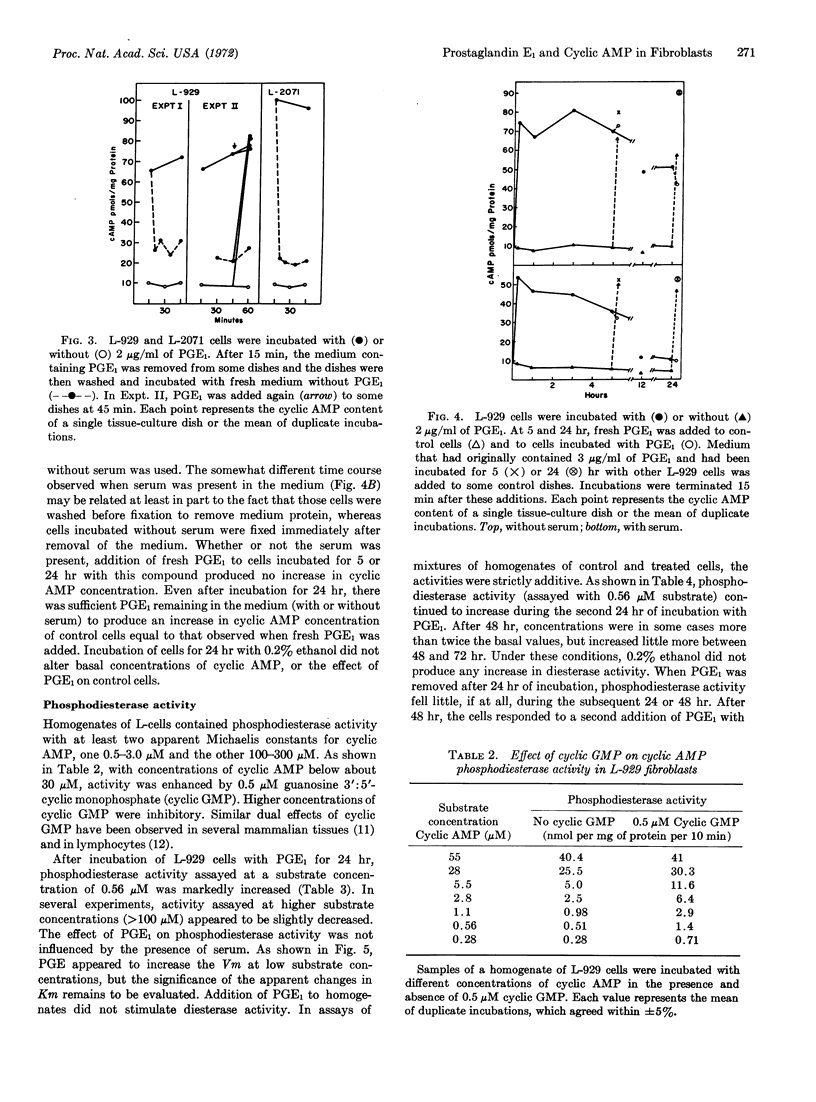
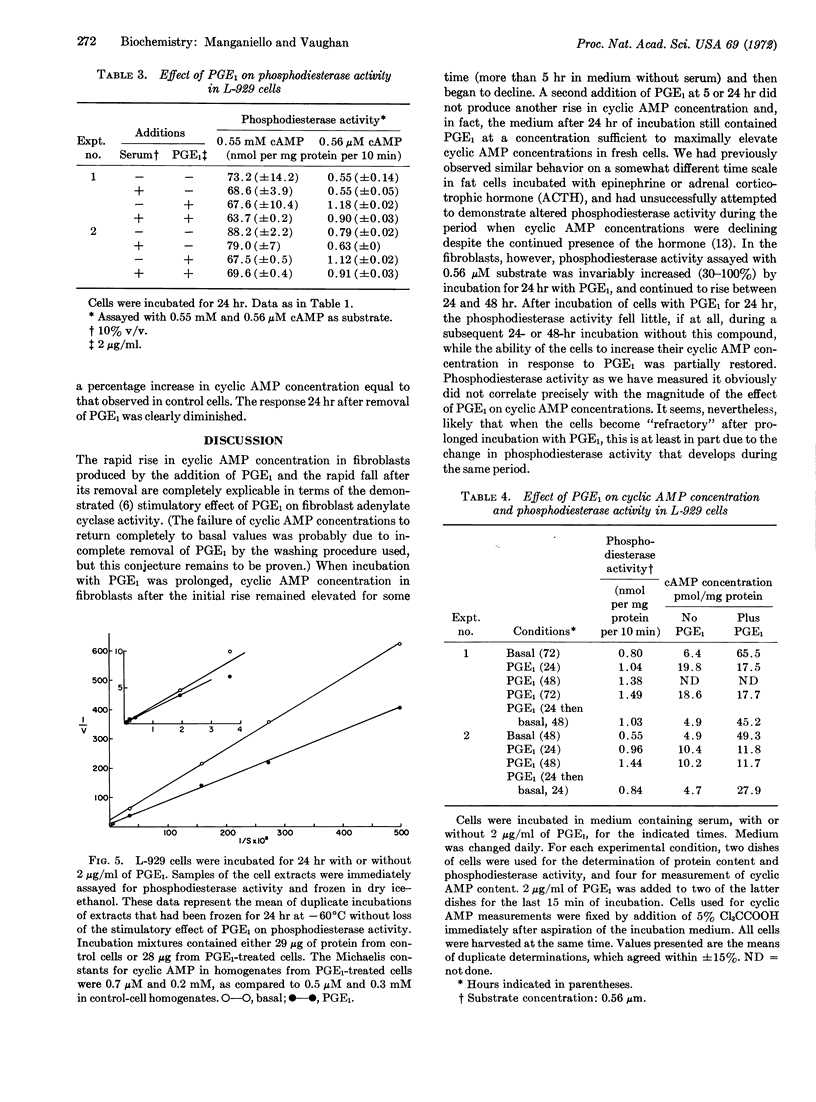
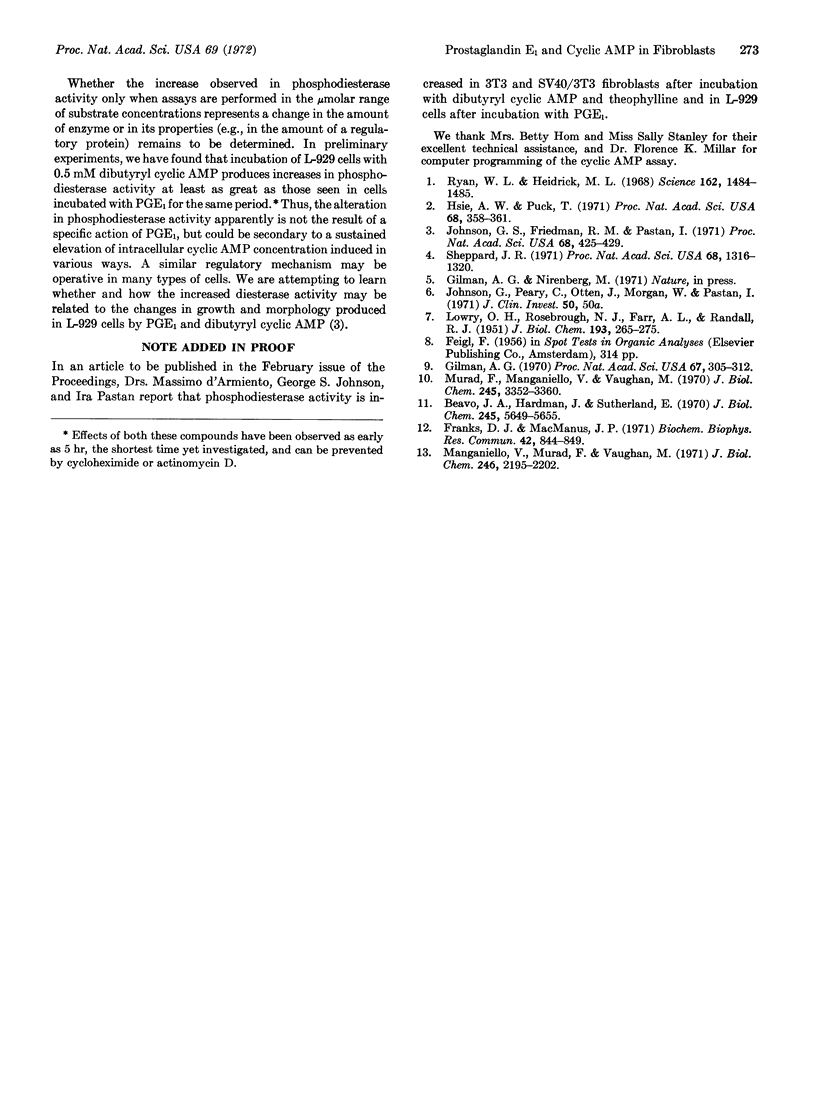
Selected References
These references are in PubMed. This may not be the complete list of references from this article.
- Beavo J. A., Hardman J. G., Sutherland E. W. Hydrolysis of cyclic guanosine and adenosine 3',5'-monophosphates by rat and bovine tissues. J Biol Chem. 1970 Nov 10;245(21):5649–5655. [PubMed] [Google Scholar]
- Franks D. J., Macmanus J. P. Cyclic GMP stimulation and inhibition of cyclic AMP phosphodiesterase from thymic lymphocytes. Biochem Biophys Res Commun. 1971 Mar 5;42(5):844–849. doi: 10.1016/0006-291x(71)90507-9. [DOI] [PubMed] [Google Scholar]
- Gilman A. G. A protein binding assay for adenosine 3':5'-cyclic monophosphate. Proc Natl Acad Sci U S A. 1970 Sep;67(1):305–312. doi: 10.1073/pnas.67.1.305. [DOI] [PMC free article] [PubMed] [Google Scholar]
- Hsie A. W., Puck T. T. Morphological transformation of Chinese hamster cells by dibutyryl adenosine cyclic 3':5'-monophosphate and testosterone. Proc Natl Acad Sci U S A. 1971 Feb;68(2):358–361. doi: 10.1073/pnas.68.2.358. [DOI] [PMC free article] [PubMed] [Google Scholar]
- Johnson G. S., Friedman R. M., Pastan I. Restoration of several morphological characteristics of normal fibroblasts in sarcoma cells treated with adenosine-3':5'-cyclic monphosphate and its derivatives. Proc Natl Acad Sci U S A. 1971 Feb;68(2):425–429. doi: 10.1073/pnas.68.2.425. [DOI] [PMC free article] [PubMed] [Google Scholar]
- LOWRY O. H., ROSEBROUGH N. J., FARR A. L., RANDALL R. J. Protein measurement with the Folin phenol reagent. J Biol Chem. 1951 Nov;193(1):265–275. [PubMed] [Google Scholar]
- Manganiello V. C., Murad F., Vaughan M. Effects of lipolytic and antilipolytic agents on cyclic 3',5'-adenosine monophosphate in fat cells. J Biol Chem. 1971 Apr 10;246(7):2195–2202. [PubMed] [Google Scholar]
- Murad F., Manganiello V., Vaughan M. Effects of guanosine 3',5'-monophosphate on glycerol production and accumulation of adenosine 3',5'-monophosphate by fat cells. J Biol Chem. 1970 Jul 10;245(13):3352–3360. [PubMed] [Google Scholar]
- Ryan W. L., Heidrick M. L. Inhibition of cell growth in vitro by adenosine 3',5'-monophosphate. Science. 1968 Dec 27;162(3861):1484–1485. doi: 10.1126/science.162.3861.1484. [DOI] [PubMed] [Google Scholar]
- Sheppard J. R. Restoration of contact-inhibited growth to transformed cells by dibutyryl adenosine 3':5'-cyclic monophosphate. Proc Natl Acad Sci U S A. 1971 Jun;68(6):1316–1320. doi: 10.1073/pnas.68.6.1316. [DOI] [PMC free article] [PubMed] [Google Scholar]


